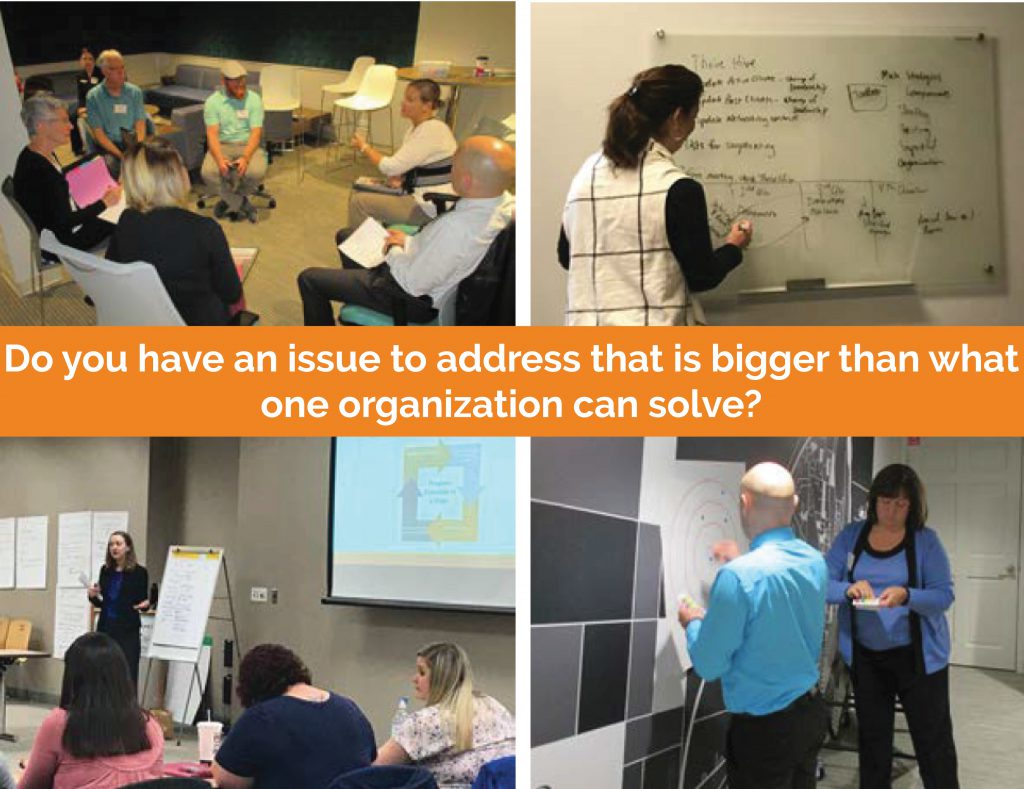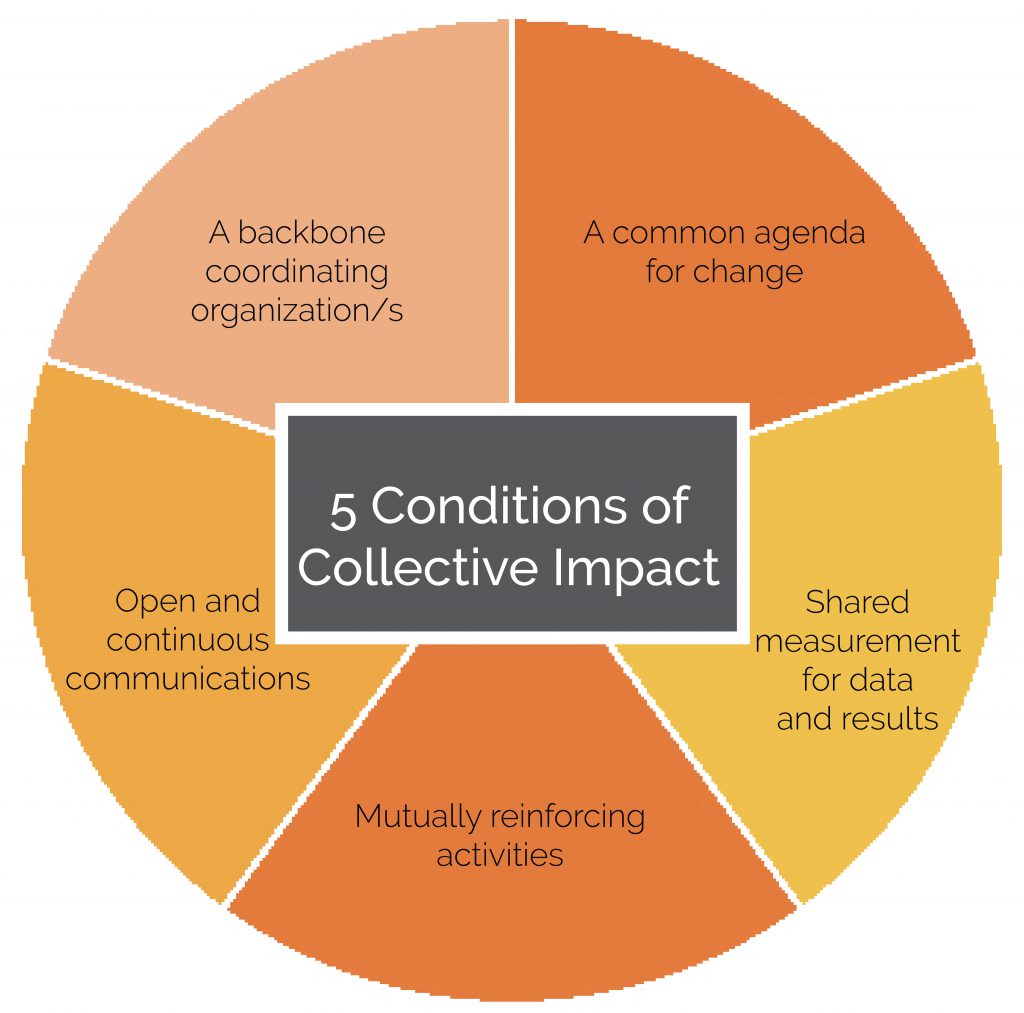Do you see an issue or need in your community that is greater than what your individual organization can address on its own? Right now, COVID-19 is wreaking havoc on our communities.

In addition to responding to COVID-19, our clients have been working to strengthen their talent pipeline, improve student attainment, decrease childhood obesity, and curtail population decline. Some of our clients are addressing these issues on their own through programming and services, but a growing number are turning to the framework of “collective impact” to achieve greater progress.
Collective impact brings together cross-sector partners – business, government, and nonprofits – to work toward a common agenda of solving a specific social problem. The idea of collaboration and partnership is nothing new in the social sector. Collective impact is more rigorous and specific than simple collaboration among organizations.

There are five conditions that, together, lead to meaningful results from collective impact. We first wrote about this framework several years ago in this blog, and it is what we use to support the development of coalitions.
Five Conditions of Collective Impact
- Common Agenda: All participants have a shared vision for change, including a common understanding of the problem. The participants have developed a joint approach to solving it through agreed upon actions.
- Shared Measurement: Create a “baseline understanding” of where you are today in regard to the issue, and reach agreement on key indicators. Collect data and measure results consistently across all participants ensuring efforts remain aligned and participants hold each other accountable.
- Mutually Reinforcing Activities: When developing the common agenda, participants will take the lead on different activities – work they are most likely already doing – while still being coordinated through a mutually reinforcing plan of action with all participants. The goal is alignment and cohesion, not isolation.
- Continuous Communication: Consistent and open communication is needed across the many players to build trust, assure mutual objectives, and stay up to date on progress. This keeps the coalition connected, motivated, and on track with making progress.
- Backbone Organization: Creating and managing collective impact requires a dedicated resource with staff and a specific set of skills to serve as the backbone for the entire initiative and coordinate participating organizations and agencies. Someone needs to be responsible to move the work forward, bring everyone together, gather the resources, etc.
Let me share an example of how collective impact works. Take for example the compelling challenge of a lack of high-quality child care in a community. This is an issue that we have supported in several communities and are working with new ones. Wabash County, Jay County, Montgomery County, Delaware County, and Kosciusko County are just a few such communities.
An individual child care program or school could decide to expand a preschool classroom to increase the supply of child care in their community. This is an example of an isolated intervention of an individual organization. This response might help a few families in the community but may not address the underpinnings of the lack of child care, which could be access (the hours and locations of the child care spots) and/or affordability (the cost of child care) as well as many other issues.
A collective impact approach to addressing a lack of child care would bring together multiple partners who are directly and indirectly affected by the issue:
- Business – child care affects a company’s ability to recruit and retain its workforce
- Government – child care affects their ability to recruit companies into the community, increase tax revenue through wages, and help develop productive citizens
- K-12 Education – child care affects students ability to be ready for kindergarten and beyond
- Health – child care impacts children’s development and reaching critical healthy milestones
- Child Care Providers – impacts their ability to have thriving business and stay open
- Higher Education – child care needs a high-quality workforce to staff their classrooms
And the list of partners continues to grow…
After you have the partners then you begin to dig into really understanding the issue and implications in the community. This will then help to inform the development of a common agenda that all of the partners agree to supporting. The outcome of this work means that not only will there be more high-quality child care available in the community, but also that the hours will be expanded to meet local employer needs, scholarships will be provided to help families afford the cost and wraparound supports will be facilitated to connect families and providers with critical resources, and so on. The community coalition has identified agreed upon measures that they are tracking – number of spots by age group, number of certified teachers, cost of care, uptake rate – and have a communication plan to share information internally with the coalition and externally with the public and other stakeholders. This community is well on their way to seeing tremendous progress in addressing the lack of child care.
The collective impact framework provides a roadmap for stakeholders to strategically address big issues plaguing the community. Our communities are facing tremendous challenges with COVID-19, racial injustice, and many other social issues. We see the value in using collective impact with our clients and would love to talk to you if you are interested in getting started!

